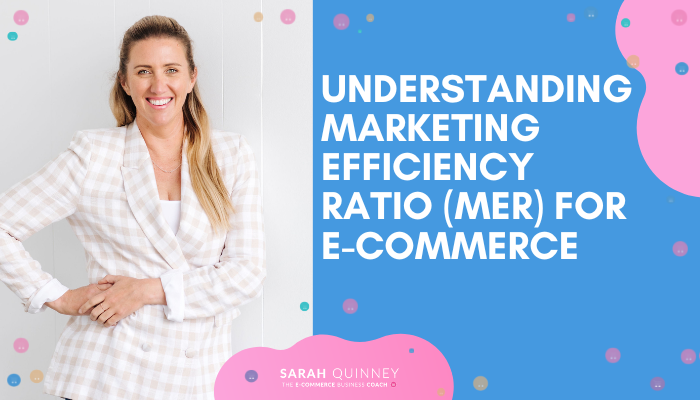
Understanding Marketing Efficiency Ratio (MER) for E-Commerce
Marketing efficiency ratio (MER) measures the success of your marketing in terms of revenue (i.e., how much revenue your marketing efforts are generating).
It is sometimes referred to as marketing efficiency rating or media efficiency ratio. Regardless of the name, MER refers to revenue / total amount spent on marketing.
Let’s look at an example.
If your business generated $350,000 in revenue and you spent $65,000 on marketing, your MER is 5.38 (meaning revenue amounted to 5.38 x the amount you spent on marketing).
A higher ratio indicates higher revenue.
Why is MER important?
Marketing efficiency ratio is important because it provides a measure of your marketing. And keeping it in check with monthly or bi-annual audits allows you to refine your marketing accordingly.
If the ratio dips too low, you’re probably spending more than you should be on marketing. Or, you’re spending on the wrong type of marketing.
If you see the ratio getting higher, you are likely in a position to spend more on ads and therefore generate even more revenue.
A 7-8 ratio tends to be the sweet spot for retailers, as this ratio would mean you’re generating 7-8x more than you’re spending.
However, like everything, there are exceptions to the rule.
MER is typically higher for newer businesses because more resources are being spent to establish awareness. So if you just opened your e-commerce store, it may be a while before you’re able to hover around that 7-8 ratio mark. You may even sit around a 25-30 ratio for a while!
Depending on your product type, customer base, and other store-specific factors, a 7-8 ratio may be way too high or low. You may have a product that is a larger investment and thus requires more marketing spend in order to convert. On the opposite side of things, your product may be an everyday necessity that customers tend to buy without hesitation.
MER should be specific to your store and goals.
MER vs. ROAS
You may have heard of ROAS, or return on ad spend. And if so, you’re probably wondering how MER is different.
To put it simply, ROAS looks at revenue generated from a specific advertisement or campaign. MER, on the other hand, looks at revenue generated from your marketing as a whole. It is broad and looks at the entire business, whereas ROAS is ad-specific.
Both are beneficial and can provide great insight into your store’s numbers. But, today we’re focusing on MER, so let’s get into why it’s beneficial for your business.
Benefits of MER
Provides a broad view of marketing efforts
Marketing efficiency ratio provides a broad view of your marketing efforts. It allows you to get a bird’s eye view of your ad spend as a whole and to see how it directly attributed to your sales.
You may find it helpful to look at this from month to month to see how more or less marketing efforts impact revenue.
You may also find that numbers vary depending on the time of year, as holidays and other big events can drastically change the way consumers spend.
Helps show whether more spending is feasible
MER allows you to get an idea of whether you should increase your marketing spending or not. By determining the ratio, you’re able to see if you’re spending crumbs on the dollar or throwing way too much at marketing.
However, it is important to note that MER should not be the only factor that you consult in increasing or decreasing marketing spending. Be sure to take additional numbers into account before making a change.
Can help determine the cost of acquiring new customers
It’s known in e-commerce (and all commerce, really), that retaining customers is much easier (and more profitable) than acquiring new customers.
If there is a particular month when you spend a lot on acquiring new customers, looking at your marketing efficiency ratio can help you determine whether that marketing spend was fruitful. It also may help you determine whether a portion or most of those marketing dollars would be better spent on retaining existing customers.
In summary, marketing efficiency ratio is a great tool to use to measure the effectiveness of your marketing. It’s important to check in regularly to determine success and make any necessary refinements. By measuring MER, you have a great parameter for understanding how your marketing impacted your revenue as a whole.
—

? The E-Commerce Women in Business Mastermind
We’re the top eCommerce brands that come to grow their store. The leading e-commerce mastermind for established brands – with a unique combination of
e-commerce, business and proven strategy for your success.
Any questions? Just hit reply!
Yours in success
Sarah x





